Kingdom Fungi Class Agaricomycetes Order Agaricales Rank Variety | Phylum Basidiomycota Subclass Hymenomycetes Family Amanitaceae | |
 | ||
Scientific name Amanita muscaria var. persicina Similar Amanita muscaria var gues, Amanita muscaria var formo, Russula persicina, Russula luteotacta, Russula nobilis | ||
Amanita muscaria var persicina in situ
Amanita muscaria var. persicina, commonly known as the peach-colored fly agaric, is a basidiomycete fungus of the genus Amanita. This variant may be distinguished from A. muscaria by its peach-colored center.
Contents
- Amanita muscaria var persicina in situ
- Amanita muscaria var persicina in situ 10 2 2012
- Description
- Cap
- Gills
- Spores
- Stipe
- Distribution and habitat
- Biochemistry
- References
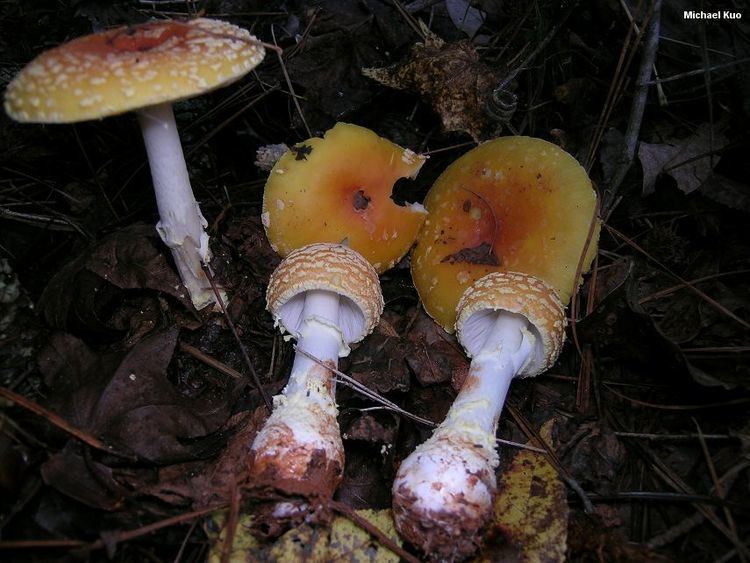
Recent DNA evidence has shown Amanita muscaria var. persicina to be a distinct species from Amanita muscaria and it will be getting its own species status soon.
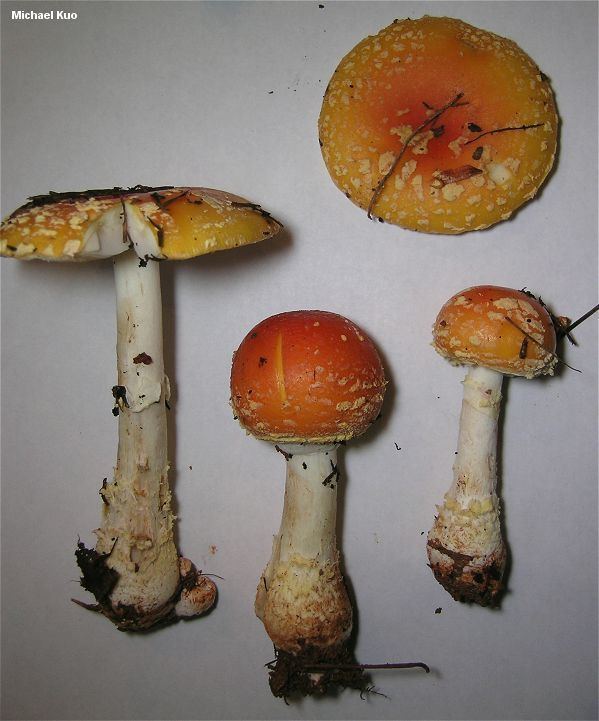
Amanita muscaria var persicina in situ 10 2 2012
Description
Amanita muscaria var. persicina has a pleasant taste and odor. It may be poisonous if not properly prepared. It should not be eaten without further research and professional identification.
Cap
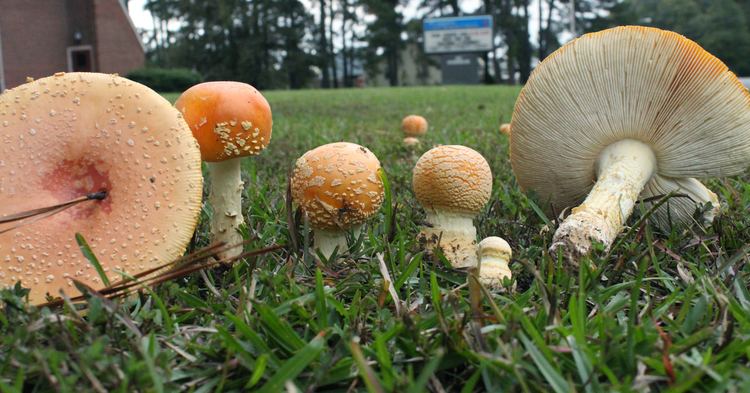
The cap is 4-13 cm wide, hemispheric to convex when young, becoming plano-convex to plano-depressed in age. It is pinkish-melon-colored to peach-orange, sometimes pastel red towards the disc. The cap is slightly appendiculate. The volva is distributed over the cap as thin pale yellowish to pale tannish warts; it is otherwise smooth and subviscid, and the margin becomes slightly to moderately striate in age. The flesh is white and does not stain when cut or injured.
Gills
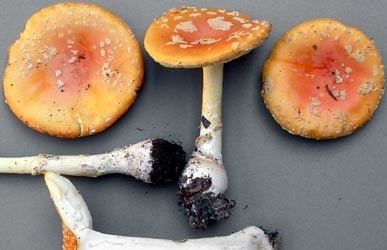
The gills are free, crowded, moderately broad, creamy with a pale pinkish tint, and have a very floccose edge. They are abruptly truncate.
Spores
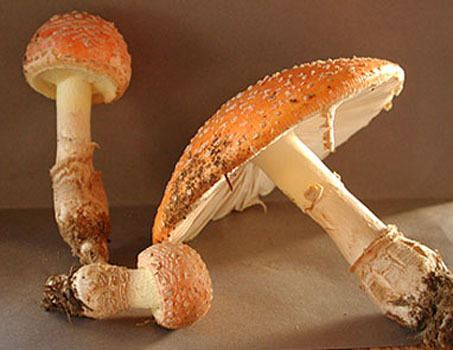
Amanita muscaria var. persicina spores are white in deposit, ellipsoid to elongate, infrequently broadly ellipsoid, rarely cylindric, inamyloid, and are (8.0) 9.4–12.7 (18.0) x (5.5) 6.5–8.5 (11.1) µm.
Stipe
The stipe is 4–10.5 cm long, 1-2 cm wide, and more or less equal or narrowing upwards and slightly flaring at the apex. It is pale yellow in the superior region, tannish white below, and densely stuffed with a pith; the ring is fragile, white above and yellowish below, and poorly formed or absent. Remnants of the universal veil on the vasal bulb as concentric rings are fragile or absent.
Distribution and habitat
Amanita muscaria var. persicina is found growing solitary or gregariously, it is mycorrhizal with conifers (Pine) and deciduous (Oak) trees in North America. It is found often in the fall but sometimes in the spring and summer in the southern states. It is common in the southeast United States, from Texas to Georgia and north to New Jersey.
Biochemistry
This species contains variable amounts of the neuroactive compounds ibotenic acid and muscimol.
